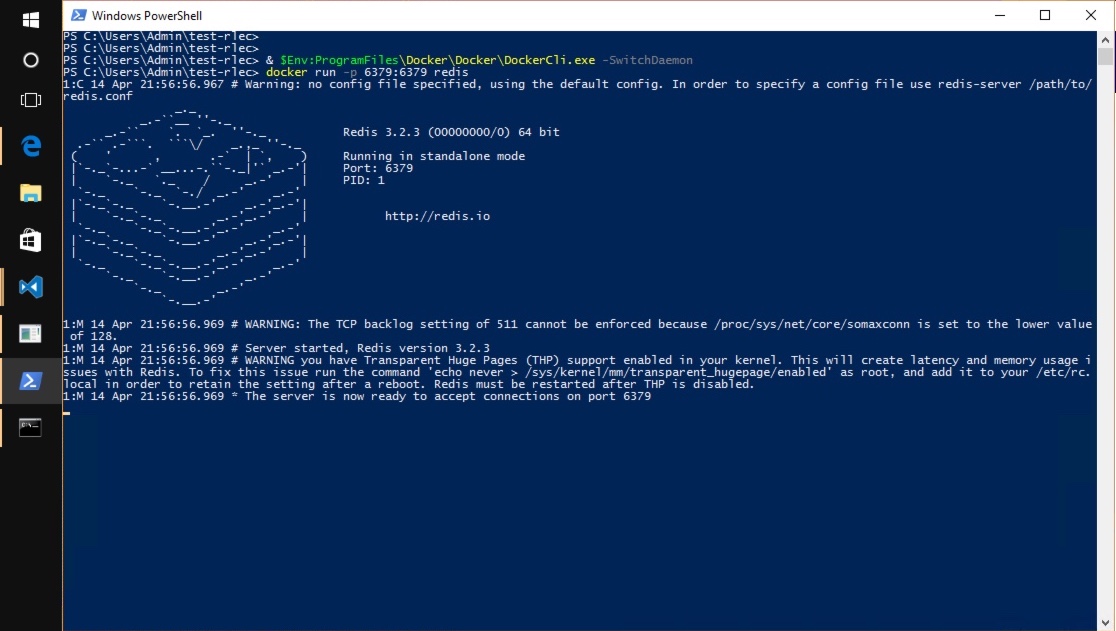

- Pip install redis how to#
- Pip install redis driver#
- Pip install redis full#
- Pip install redis trial#
- Pip install redis password#
This time hold on to the AsyncResult instance returned from the task: > result = add.delay(4, 4) Now with the result backend configured, call the task again. To read more about result backends please see Result Backends. Use Redis as the result backend: BROKER_URL = 'redis://localhost:6379/0'Īpp = Celery('tasks', broker=BROKER_URL, backend=BACKEND_URL) To keep track of the task's states, Celery needs to store or send the states somewhere. (If the task failed, it gets the exception and traceback). > from tasks import addĬalling a task returns an AsyncResult instance, which can check the state of the task, wait for the task to finish, or get its return value. To call the task, use the delay() method. Run the worker by executing with the worker argument: $ celery -A tasks worker -loglevel=info The second argument is the broker keyword which specifies the URL of the message broker. This way names can be automatically generated. The first argument to Celery is the name of the current module. The URL should be in the format of: the file tasks.py: from celery import Celery Install both Celery and the dependencies in one go using the celery bundle: $ pip install -U celeryĬonfigure the location of your Redis database: BROKER_URL = 'redis://localhost:6379/0' Reach out to our Support Team if you have any questions.Ĭnxn = mod.connect("Server=127.0.0.Additional dependencies are required for Redis support.
Pip install redis trial#
Free Trial & More Informationĭownload a free, 30-day trial of the Redis Python Connector to start building Python apps and scripts with connectivity to Redis data. With the CData Python Connector for Redis, you can work with Redis data just like you would with any database, including direct access to data in ETL packages like petl. In the following example, we add new rows to the Customers table. In this example, we extract Redis data, sort the data by the CompanyName column, and load the data into a CSV file. With the query results stored in a DataFrame, we can use petl to extract, transform, and load the Redis data. Sql = "SELECT City, CompanyName FROM Customers WHERE Country = 'US'"Įxtract, Transform, and Load the Redis Data In this article, we read data from the Customers entity. Use SQL to create a statement for querying Redis. Use the connect function for the CData Redis Connector to create a connection for working with Redis data.Ĭnxn = mod.connect("Server=127.0.0.1 Port=6379 Password=myPassword ") You can now connect with a connection string.
Pip install redis full#
Code snippets follow, but the full source code is available at the end of the article.įirst, be sure to import the modules (including the CData Connector) with the following: Once the required modules and frameworks are installed, we are ready to build our ETL app. Pip install pandas Build an ETL App for Redis Data in Python Use the pip utility to install the required modules and frameworks: pip install petl Set UseSSL to negotiate SSL/TLS encryption when you connect.Īfter installing the CData Redis Connector, follow the procedure below to install the other required modules and start accessing Redis through Python objects.
Pip install redis password#

For this article, you will pass the connection string as a parameter to the create_engine function. Create a connection string using the required connection properties.

Pip install redis driver#
When you issue complex SQL queries from Redis, the driver pushes supported SQL operations, like filters and aggregations, directly to Redis and utilizes the embedded SQL engine to process unsupported operations client-side (often SQL functions and JOIN operations).Ĭonnecting to Redis data looks just like connecting to any relational data source. With built-in, optimized data processing, the CData Python Connector offers unmatched performance for interacting with live Redis data in Python.
Pip install redis how to#
This article shows how to connect to Redis with the CData Python Connector and use petl and pandas to extract, transform, and load Redis data. With the CData Python Connector for Redis and the petl framework, you can build Redis-connected applications and pipelines for extracting, transforming, and loading Redis data. The rich ecosystem of Python modules lets you get to work quickly and integrate your systems more effectively.


 0 kommentar(er)
0 kommentar(er)
